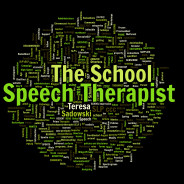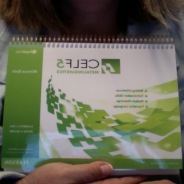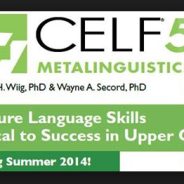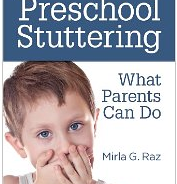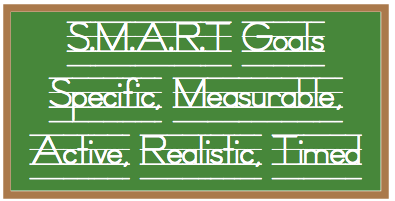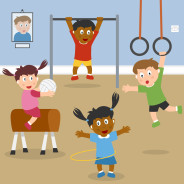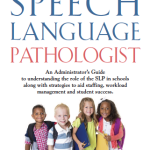Administrators: Know Your SLP’s

The biggest mistake administrators make is not getting to know their professionals. Often based on the decisions you make, things you say in meetings or even off handed comments you make it is clear to Speech Language Pathologists that you have no idea what we do, how knowledgeable we are, the resources we need to do their job better or even areas we address. When making big decisions especially those that involve procedure get your staff involved. You might be surprised at what your staff can offer. Teachers and other professional staff such as SLP’s can often be a feather in your cap if you listen to them rather than immediately disagree with them.
Learn the roll of every staff member and professional in your building or school. You never know when someone might have special training or experience to get you through a rough situation. Listen to what your staff has to say even if it’s an opinion. Successful administrators and school boards cannot have a myopic point of view. I’ve seen this happen and it does not create a strong, successful school system.
SLP’s are extremely knowledgeable. Our expertise goes beyond articulation therapy. We have training that goes way beyond academics. We know how the brain and body function together. We can pick out specific difficulties in children that can make life long differences if not remediated. We know about auditory development (not just hearing) and what happens to students who have difficulty with auditory processing, discrimination etc. We know immediately when your school system has a poor phonics program. We work on language development with severely autistic children, children with non-verbal learning disabilities and everything in-between. We work with children who have specific learning disabilities with average cognitive skills and those children who are severely learning impaired with low cognitive skills. Unless you’ve studied higher level language development you don’t have a clue it’s missing until it is almost too late. This list only hits the tip of the iceberg. I could go one and on ….. but I think you get the point.
Get to know you SLP’s and other professionals. Ask the questions and listen to them. It will only make you a better administrator.
Teresa
Have school Speech Language Pathologists lost their focus?
When I went to school my courses focused primarily on child development, language acquisition, understanding how the brain worked (and didn’t work), remediation techniques for articulation and language and learning about disabilities that resulted in a language delay or impairment. We didn’t just learn about working with kids or adults but all ages and disabilities. My coursework was clearly based on a medical model but I was trained to work in all settings.
Throughout my career, I’ve carefully evaluated my students, identified their strengths and weaknesses through testing designed specifically to assess language functioning across receptive, expressive and pragmatic areas. Based on my testing, I wrote goals that focused on improving “language” abilities. I always felt that my purpose was to target and improve underlying language skills. The goal was to improve language abilities so students could be on the path to develop mature adult language, function among their peers, work independently, do well in school, have a shot at successful higher education and become productive adults.
At what point did the role of the Speech Language Pathologist change within the public schools? Who was it that thought it would be good for the Speech Language Pathologist to base their goals on the curriculum rather than the child’s development or skill level? Several years back in one school system I worked for, it was made very clear to me that we were not supposed to be thinking in the “medical model”. I found that just absurd since language and learning are brain based. My vast experience also told me that if students did not acquire language in a prescribed developmental manner gaps in language development, understanding and usage, would be the end result.
The way we are supposed to provide “therapy” and write goals has changed, yet our testing and most of our materials have remained the same. That’s a clue right there. The materials we use are rarely leveled. We use our clinical judgement to find appropriate starting points, when to raise/lower the bar and when modification of instruction/material is needed. Language develops on a continuum, ideally developing and improving slowly over time. Language skills are extremely difficult to measure on a weekly basis. With any luck at all you are raising the level of the material slowly but how can that really be reflected in the goal?
I know I sound like an old therapist who can’t accept change. Perhaps maybe that’s part of it. However, I also know that children need strong underlying language abilities to “access the curriculum” (I am so sick of that term). Writing our goals and changing our methods to reflect specific curriculum will not target underlying skills, no matter how you spin it. It’s my belief that working on language through curriculum only promotes the development of splinter skills. We are therapists not co-teachers. That doesn’t mean that I am not familiar with school curriculums or that I don’t occasionally incorporate a vocabulary list, book or specific classroom task into therapy. Reality is school Speech Language Pathologists only see students 1-2 times a week, hardly enough time to keep up with specific classwork. Therapy groups may consist of students from different grades/classes. That alone makes working within curriculum on a regular basis impossible. (I do realize there are other effective therapy models that are designed to work within the curriculum but those SLP’s are not carrying 50+ students on a caseload and those schools are supporting time for program development.)
My feeling is schools do not realize what skills Speech Language Pathologists bring to the table. They don’t understand how extensive and varied our training was. Note that School Psychologists (who also base their training on a medical model) have not been asked to change in the same way Speech Language Pathologists have. Because we are trained in the medical model we have a deeper understanding of why students have language/learning disabilities. We know how to help remediate language using specific techniques/materials unrelated to school curriculum. We need to reclaim our role as “therapists” in the public schools. Given the changes that have taken place in education, I’m not sure that’s possible.
Are you a CELFie?
With the update and name change of the Test of Language Competence (TLC), the term CELFie takes on a whole new meaning in the world of speech and language pathology. The TLC is now The Clinical Evaluation of Language Fundamentals 5 Metalinguistics. Now that we have two major CELF test batteries, I’m curious. How many of us SLP’s out there are now true CELFies?
I guess I’m a CELFie. I’ve been using the CELF probably since it came out. I easily remember using the CELF 3, 4 and now 5. I used the CELF, back when I still had a typist typing my reports. I’ve always liked it and found it easy to use and reliable. I also liked the Test of Language Competence and used it often with my middle school population and once in a while with my little ones. The TLC desperately needed a makeover. In general, I like the new TLC or as it’s now called The Clinical Evaluation of Language Fundamentals 5 Metalinguistics. Now I have two CELF products that are mainstays in my test battery. My only disappointment is that I purchased the CELF 5 Metalinguistics on good faith without much research and it does not have a component for younger children.
Just because I’m a CELFie does not mean I don’t use my clinical judgement to choose the right subtests and tests for my students based on their need. It just means I find the CELF works well with most students.
Even private practitioners, clinics and hospitals are becoming CELFies. I think this is going to be a problem down the road. We use to turn to outside evaluations to go more in-depth, use other testing to differential diagnose and for second opinions. The last several outside evaluations I’ve read the past 2 years, even language testing as part of neuropsychological evaluations, have consisted primarily of the CELF or subtests of the CELF. This will eventually create one of two out comes, schools will have to accept previous testing from the outside agency or buy other test materials. Both outside agencies and schools will have to keep a close eye on administration dates. I don’t want to be sitting in a meeting and have to tell a parent their outside evaluation, for which they paid dearly for is not valid because the student was given the same test three months earlier. Nor would I want to make the same mistake.
So are you a CELFie?
Have you ever been a CELFie?
What do you like best about being a CELFie?
If you don’t consider yourself a CELFie what is your favorite test battery?
Have you run into difficulty with outside evaluators using the CELF 5 exclusively?
Check out CELF-5 First Impressions
Check out CELF-5 Metalinguistics First Impressions
First Impression CELF-5 Metalinguistics
I was a big fan of the Test of Language Competence (TLC). Almost every middle school student I tested received the TLC. It looked at areas of language not addressed by most basic language batteries. The only problem was, it was seriously outdated. Whenever I lost access to the test, I called Pearson to find out if an update was in the works. The answer was always no but I could never bring myself to purchase the TLC because it was so outdated. You can only imagine how thrilled I was to learn they were finally updating the TLC.
The Test of Language Competence has finally been replaced by The CELF-5 Metalinguistics. The CELF-5 Metalinguistics just arrived in the mail a few days ago so I won’t get a chance to administer it until the fall but I have had a chance to look it over thoroughly. My first impression is that I think I am going to like it. It is extremely similar to the TLC but with updated examples, pictures and other diagnostic material.
The major addition is a Metalinguistic Profile checklist. This is similar in style to the pragmatic profile on the CELF and is designed to be filled out by someone familiar with the student and the students culture. Finding that person might be a little tricky. I notice the language used in the Metalinguistic is rather professional and might be difficult for a parent or caregiver to understand. An SLP may have to walk the familiar person through the checklist. A standard score can be rom the checklist. Being a little old school myself, I’m not sure I like getting a scaled score from an observation. If we need to show data, we’re all set. However, the scaled score from the Metalinguistic Profile is not part of the composite scores.
- The Making Inferences subtest is exactly the same format as the Listening Comprehension: Making Inferences subtest on the TLC.
- The Conversation Skills subtest is very similar to the Oral Expression: Recreating Sentences subtest on the TLC. However, the context and prompts on the Conversation Skills subtest are more specific, meaning the student will have to be more specific on how they interpret the situation presented. I believe that’s a wonderful improvement that will provide significant diagnostic information.
- The Multiple Meaning subtest is exactly the same format as the Ambiguous Sentence subtest. This has always been one of my favorite subtests so I am glad they did not change it too much. Just noticed the new version still has the test item involving relatives visiting. Oh the things we SLP’s find funny.
- The Figurative Language subtest is the only subtest where the name hasn’t changed. I am a little concerned with the new examples but I’ll have to reserve judgement until I give the test a few hundred times. When I present figurative expressions to students, I always try to make sure several are within their realm of experience.
Just like the CELF 5 item analysis is provided at the end of each subtest. I don’t believe item analysis was available on the TLC. Item analysis might turn out to be very helpful or too much information. Personally I rarely used or reported the composite score from the TLC. I felt that the subtests were very different in the skills each addressed on the TLC. I was very selective about which TLC subtests I gave to students and always based my decision on their specific needs, abilities and cognitive skills. The CELF 5 metalinguistic, just like the TLC is not for everyone. (I often use the Test of Auditory Processing Cohesion Index or the Test of Problem Solving to obtain some similar information),
My first impression is that I am going to enjoy giving this test. I feel I will be able to obtain the diagnostic information that I will need to write appropriate educational plans and find entry points into therapy. My only disappointment is that the test does not go lower than 9. The TLC had separate but similar test items that went down to 5. I didn’t use the TLC that often for the students under 9 but when appropriate it was a excellent diagnostic tool.
If you are using the CELF-5, the CELF-5 Metalinguistics is a must have, especially when working with older children. It gives many test items in each section and is fairly quick to give.
I would love to hear about your first impressions, especially if you’ve had a chance to give the CELF-5 Metalinguistics.
Fed Up With Lunch – Book Review
Book Review
“Fed Up With Lunch”
By Author: Sarah Wu
As a 30 year veteran of the public school system, I can tell you honestly that I haven’t voluntarily eaten a school lunch since 1983. I won’t go into the gory detail but lets just say that the meal of pulled BBQ pork just didn’t sit well. I’ve worked in many school systems and have witnessed many attempts to upgrade school lunch programs. These changes included hiring a new person to run the school lunch program, new schools with elaborate cafeterias, bringing in an outside service to run the food program, salad bars, menus with fun upbeat names and finally the worse going from a lunch lady who actually cooked the food to a service that provided styrofoam trays pre-filled with extremely small portions of reheated food (I guess that saved money). Despite these attempts to improve school lunch, to me the lunches always looked like the same crap food served in a different way.
As you can tell I have a total distain for school lunch programs so when a related search turned up Sarah Wu’s book “Fed Up With Lunch,” I knew it was a must read.
“Fed Up With Lunch” is based on Sarah Wu’s experiment and original blog. She vowed to eat a school lunch everyday for a year and blog about it. In the process she observed a few disturbing secrets about school food programs. Some of Mrs. Wu’s research involved looking at the ingredients in school food, analyzing menus, what actually passes for nutritional requirements, lack of fresh food, over packaging/processing and where some of the food comes from. Her school lunch journey has taken Mrs. Wu from blogging anonymously as Mrs. Q to appearances on various national panels to this book.
Along with talking about “the food” in school lunch programs. Mrs Wu also delves into the fact that children are rushed through meals at school and have little or no opportunity to move through the day. This is what I have personally observed in every public school I have ever worked in. Mrs. Wu was also careful to point out that Lunch Ladies are not cooks anymore but servers. Yet what they are given to serve often reflects badly on them when what to serve is usually an administrative decision.
Mrs. Wu’s book goes just short of criticizing government policies, Michelle Obama’s Lets Move program or school administrators. In her book she chooses to take a more active approach by suggesting her own ideas for positive change and providing several suggestions on what parents, teachers and students can do to improve their school lunch programs.
This was an informative and well organized book. Reading it should make any parent, teacher and school administrator think twice about what school are serving and what their kids are eating. I find it ironic that just about every school in America has alined themselves with the government sponsored wellness program, but yet the food served in schools in the United States has not improved one bit and physical exercise is not strongly encouraged. Under the new wellness programs in schools, I can’t give a hungry student a granola bar or even an apple but school cafeteria still serve grey green beans, mystery meat or tater tots several times a week. The amount of food thrown away on any given school day in any school I’ve ever worked in is astounding. Parents have no way of knowing what or if their kids are eating unless they make a concerted effort to ask or occasionally observe. Apparently in some school districts, bringing a lunch from home is not even an option.
I loved the idea of Mrs. Wu’s project and enjoyed reading about her experiences. It made me think, perhaps school food would be better if all the administrators were required to eat school lunches or not allowed to bring lunches from home. Wouldn’t it be interesting if the food served to the kids at lunch was also served at school functions and administrative meetings, styrofoam trays and all. Something tells me food services would improve greatly. Any administrators or districts that want to take on that challenge?
Book Review: Preschool Stuttering-What Parents Can Do
Mirla G Raz author of the Help Me Talk Right Series, which focuses on how to teach /r/, /s/ and /l/ in 15 Easy Lessons has come up with another winner. This time she focuses on helping parents of preschool stutters in her new book “Preschool Stuttering, What Parents Can Do”. This book is a common sense guide for parents, giving them all the information they need to give and get their preschooler the help they need. “Preschool Stuttering, What Parents Can Do” is also designed to try and help alleviate concern through knowledge.
The initial chapters help to demystify disfluency in young children. Ms. Raz thoroughly explains stuttering risk factors and typical vs. atypical disfluencies observed in preschoolers. She goes on to give many important tips an examples on how to respond to a child who is dysfluent. The emotional impact of stuttering is also discussed in-depth along with the impact of environmental changes or life event changes.
The latter chapters of “Preschool Stuttering, What Parents Can Do” focus on getting professional help. Ms. Raz provides guidelines on when to seek professional help , what type of therapy services are necessary for making the most effective progress, what to expect from the therapy process, question to ask and the parents role in the therapy process.
“Preschool Stuttering, What Parents Can Do” is written and organized in such a manner that it is easy to understand and follow. There is a brief bulleted preview and review for each chapter pointing out key points. This provides a wonderful summary and makes it very easy to find information at any point. Some subsections of this book are also bulleted also providing a quick review. The final chapter is a Q and A of questions that may come up during the course of reading this book.
“Preschool Stuttering, What Parents Can Do” in my opinion covers it all. This is not a book only to be recommended by Speech Language Pathologists. It’s extremely parent friendly and would provide an excellent starting point for parents who are concerned about their child’s disfluencies. Preschool teachers, pediatricians, nurse practitioners, psychologists and counsellors should all be familiar with this book. It is one of the best parent information guides I’ve seen in years.
Other books by Mirla Raz (and yes I do use them!)
Your School Newsletter and Your SMART Goal
For the past year and a half I’ve worked for a school district a couple days a week. When you work very part time in a school you usually get to slip under the radar for many things. SLPs in my position are sometimes even considered consult types. You tend to miss a lot of information on procedures. Anyway, SMART goal writing finally caught up with me. I was there during the initial explanation of SMART goals at the beginning of last year so I wasn’t totally unprepared. I had an idea of what I wanted to do and have actually been implementing my ideas. I even had a rough draft of my goals. Last week I was finally asked to input my goals and it was extremely simple.
My one specific professional goal was to share my knowledge with parents by providing 6 articles per year to the school newsletter. These articles focus on strategies and activities to encourage language development. I’ve been doing this since October of 2012 and have provided more than my specified 6 articles per year. While it’s true not many actually read school newsletters, I have received positive feed back from parents, teachers, paraprofessionals and most important my school principal.
Rather than have these articles just sit on my computer, I thought others might want to take these parent focused articles and post them in their own school newsletter. Figuring out the best way to share the articles has been tricky. At this time I’ve opened a store on Teachers Pay Teachers.
My articles are perfect for K-5 school news letters. The articles are very reasonably priced, the first is even free. At this time the articles are presented in word format so other SLPs or teachers can take the articles and tweak them to fit their schools needs. In the future some but not all articles will remain in word format (this is something I’m figuring out).
I would love for you to to check out my store on TPT and give me feedback on this idea. In the future I would be willing to bundle the articles if there is a need for that.
Teresa
Related Articles
Share Your SMART Professional Development Goal
What is your S.M.A.R.T. goal?
Looking in my archives, back in September 2012 I wrote an article on SMART goals and asked people to share their own smart goals. At that time I had searched and searched and found no specific examples for speech language pathologists. I would love to know what other SLPs ended up writing for their SMART Goals and if I get enough responses keep a data base to help others. If you want to share your SMART Goal(s) to help others please pass them along. I would also be interested in knowing how your goal was developed, who you worked with, if extra time was given to implement your goal, your caseload and if your goal was achieved. No reason to reinvent the wheel.
Teresa
Just a thought: I was speaking to a non-teacher friend about SMART goals and her comment was “As opposed to DUMB goals”. Do you think the powers that be could have picked a better acronym or do you think they did it on purpose?
Lets be realistic about school wellness programs…then maybe they’ll work
Last week a friend sent me another article on Michelle Obama’s Lets Move Campaign. The article focused a new policies where “unhealthy foods” would not allow to be advertised during the school day. In particular the article referred to the advertising of certain CocaCola company products not being allowed in schools. Keep in mind how much support the Coca-Cola company has given to many causes over the years, especially the Olympics.
“The idea here is simple – our classrooms should be healthy places where kids aren’t bombarded with ads for junk food,” the first lady said. “Because when parents are working hard to teach their kids healthy habits at home, their work shouldn’t be undone by unhealthy messages at school.” M. Obama
I am a little perplexed by what Mrs. Obama is trying to do. I’ve worked in schools for almost 30 years. I’ve never seen junk food advertising in any classroom. I haven’t seen a soda machine in schools for years. It seems as though she is trying to accomplish something that common sense dictated years ago. I’ve never seen advertising of any kind other than occasional vending machines in any school at any time. So basically Mrs. Obama is trying to achieve something that was initiated and successfully addressed at least 20 years ago. It’s also seems contradictory that advertising of “diet” drinks are going to be allowed. Personally I think the chemicals in diet drinks are even less healthy for children. Mrs. Obama, should we be promoting diet drinks to our school children?
I agree with the basic premise of Mrs. Obama’s Lets Move Campaign. When I look around any school I see many more kids that are heavier than they should be. But she is really missing the mark going after the large companies to decreasing their advertising basically because few actually advertise in schools and none on a large scale basis. Mrs. Obama should look at the name of her campaign and focus on getting kids moving. Schools can modify their schedules to extend recess, spend more time outside, make lunch more relaxing (and social) and provide better school lunches. Why focus on taking away something that is hardly there.
If Lets Move wants to support better nutrition in general, it should start a little closer to home. I’d like to know if Michelle Obama has ever seen or eaten a public school lunch? It’s been my experience to see, small portions served on cardboard or styrofoam trays, food that has been in a warmer for hours (yes hours), unappealing choices, mushy or dehydrated food and frankly poor quality food. Food programs at most schools have switched over from having school cooks to food services where the cooked food is shipped in and kept in warmers. Peek in any trash barrel in any school cafeteria and you will see just how much of “school food” is thrown out. When this much food it inedible or unappealing and not consumed, children have to be starving by the end of the school day. This can’t be good for blood sugar levels.
So how much are kids actually moving in a typical school day? This is going to vary from school to school. It’s been my experience that students have anywhere from 30-40 minutes to shove in their lunch wait for everyone to finish and then run out side to play for 15 or so minutes. Schools rarely provide playground equipment and frankly most kids don’t know how to organize games anymore. Recess is usually inconsistent lasting 15-30 minutes at most. Middle schoolers rarely get recess at all. In the winter time students in cold climates are at times confined to their classroom the whole day. Physical education classes meet for an hour once or twice a week. It’s also important to note that even if schools or principals want to increase their students movement time, the demands of Common Core puts significant limits on time allotted for recess and physical education.
How many exercise opportunities do children have outside the school day? Schools have so much to cover that even with the best intentions, schools can teach healthy habits but cannot provide adequate opportunities to exercise. Perhaps Mrs. Obama’s program should put more effort into developing opportunities to exercise outside of the school day and encouraging parents to take advantage of those opportunities. Instead of alienating large corporations such as Coca-Cola use them to help fund new exercise, sports or dance programs. Children especially from less affluent communities have fewer opportunities to join organized teams, exercise programs or lessons.
Children from all socioeconomic levels are spending an inordinate amount of time playing video games. This is hard to believe but some students actually believe they are playing sports when playing video games. Children are now being raised by video gamers and instead of shooting hoops in the backyard, parents and children now play video games together. If they’re playing video games they are usually not getting much exercise. Perhaps if Michelle Obama and Let’s Move is so adamant about going after corporations that produced less than nutritious food then perhaps they should also go after video game manufacturers since video games keep kids from moving. An awful lot of computer games are used in schools too, some with little to no educational value.
Let’s Move has been in place for 4 years now and other than absurd wellness programs that have infiltrated schools I haven’t seen many changes in students physical well being. These wellness programs have sucked all the fun out of any school celebration since no treats of any kind are allowed. Basically you can’t give a hungry kid a granola bar anymore. Even students who have yearly physicals are being weighed at school and told they are fat in very public ways. And to top it off school lunches are still awful. It’s time to be a little more realistic when it comes to developing wellness programs in schools. Mrs. Obama should put some initiatives together that are realistic, actually have a chance to be successful and might accomplish something.
Setting examples for good nutrition and exercise in schools:
- Provide nutritious and appealing meals for school lunches
- Have school lunches prepared at schools and use locally grown veggies and fruits whenever possible
- Build in more time for a relaxing meal
- Don’t have kids eat where they work even at snack time
- Allow wellness plans some flexibility, reasonable treats should be allowed on special occasions.
- Allow more time for recess, provide typical playground equipment and teach students how to organize typical playground games.
- Allow longer and flexible breaks after lunch especially for older students where they have some choice on how they manage their time
- Provide physical education classes at least 2-3 days a week, rather than focus on playing games, teach underlying skills, traditional and other types of exercises, how to organize games and provide cardio workouts.
- Provide an outdoor recess whenever possible.
- Encourage students to participate in community based opportunities to exercise, play organized sports or take lessons such as dance or gymnastics.
Thorough and Coordinated Core Evaluations Pay Off
**I learned so much about coordinating evaluations during this time period and I continue to follow the protocols set we set up with every team I work with. When you are thorough, coordinated and prepared you go to the table with confidence and a plan for the student that actually has a chance of working.
Several years ago I started a new job in s school district that was rumored to have some problems in their special education department. I was able to confirm the rumors almost immediately. While going through the caseload files I noticed that there were a high number of students who had gone out for their speech and language evaluation. Comparing dates I noticed that the outside speech and language evaluations were either part of the initial request or requested after a speech and language was completed through the school.
Now we have all had this happen. A parent or the team isn’t happy with our findings. This happens when we find problem and when we actually rule out problems. We’re never going to make everyone happy 100% of the time. However, something was different with the pattern I was seeing. There were just too many outside evaluations.
Reading the evaluations, it was easy to see why this happened. The evaluations done by the school speech language pathologist were void or any narrative or analysis. Scores were reported, ranges were given and summaries were sparse. Most of the school speech and language evaluations were 2 pages at best. The quality was poor and no supplemental testing was ever given. I wondered if the therapist was really that bad, never learned the right way to evaluate or just didn’t have time to do the job properly. I wondered how these reports were presented to the parents. Was the therapist able to go into more specific detail in the meetings? The IEP’s didn’t reflect this so I doubted that parents or teachers were given any more information. Basically the evaluations I read raised more questions than they answered.
Parents talk, even in large districts. It only takes one parent or team member to say something negative about a report for that opinion to spread. Pair that with a general lack of confidence in the school’s special education program and you can see how easily a situation like this may occurred. (I’ve seen poor evaluations from clinics and hospitals but somehow it doesn’t seem to sully their reputation as much.)
With the help of a dedicated staff and a strong team leader this particular school was able to turn around the perceptions of most of the parents. The first step in this process was to improve testing in all areas.
- The school administration supported more testing and meeting time, they were at the point where they realized it was cost effective.
- The team took the time to look over many report styles and picked the best formats and pieces from each one to help develop testing templates.
- Our program manager developed a uniform heading for our all written evaluations which immediately gave a more professional and coordinated look to our testing.
- While testing students, we collaborated with the other team members. The school psychologist often asked me to dig a little deeper in some areas. I always went to both the regular and the special education teachers to ask them what their biggest concerns were and if there was anything specific they wanted me to try and rule out.
Because of our efforts, we not only looked more professional and coordinated, we were more professional and coordinated. Parents were no longer confused when they left the meeting because everyone had their own different opinions. We did such a good job of coordinating our efforts that we rarely missed anything and our testing almost always dovetailed.
The meetings are another key factor to completing good evaluations. When reviewing testing, marathon meetings are a must. It takes a long time to review 3 or more evaluations thoroughly and to develop a good IEP. When schools take the time to answer parent concerns, parents view the schools as caring and personal. Sometimes we actually split the meetings into two if the reports were long and involved, developing the IEP a day or two later (if we had the time legally). This school system was dedicated to improving their evaluation process and hired substitutes so the teachers could stay for most if not all of the meeting. Nothing tells a parent you care less about their kid than leaving a meeting in the middle of it.
With some coordinated team effort and administrative support we were able to turn this particular situation around, keep testing in house and keep costs down. Our testing and our reports became more thorough and looked more professional than some of the previous outside evaluations. In some cases our testing was even better because we often knew the student prior to testing, we were able to include formal and informal observation, we gathered first hand information from parents and teachers to direct testing and we were able to see the kids in a familiar setting over a longer period of time.
Because we collaborated informally ahead of time
- Our recommendations, accommodations and service delivery were truly team decisions.
- We were able to look at all factors such as student need, teacher concern’s, parent’s concerns, other school demands, who would be responsible for accommodations and how to fit the needed services into the students day while developing the IEP.
- Our IEP’s were some of the best and most individual specific I had ever seen.
The outside evaluations we had on file contained recommendations and accommodations. However, they were often generic or grandiose. Suggested service delivery from outside evaluations did not take the school schedule, the child’s overall needs or other educational demands into consideration. We were able to suggest accommodations and modifications that were appropriate, realistic and effective.
I was very proud of the work we did in that school district over the three year period that this particular team worked together. I learned a lot. Watching parents perceptions change and confidence in the school grow was especially rewarding. We knew we had a lot to do with that. Our team leader problem solved and we implemented simple and very common sense changes that made us look good. Best of all the students ended up with an effective IEP. With teachers involved in the process they had an easier time following through on classroom accommodations and modifications. The teachers also knew they could come to us for support.
Did we keep 100% of our testing in house? No of course not but our percentage of in house evaluations shifted significantly with very few evaluations in any discipline completed outside of school. With simple and professional changes we were able to improve the way we did CORE evaluations without a new mandate or law. Our team leader took the talents and strengths of smart, caring professionals and gave us the time and tools to improve (not change) our evaluation process. Bottom line we were effective, we looked good and felt more professional.
Play skills are even more important than you think
Several years ago I wrote an article on the importance of play. My slant on the article was more about the importance of learning (or lack of learning) social skills, initiation of interactions and negotiation during play. This week I noted a topic hitting the educational sites on the internet about kids doing better when they get more exercise. The articles were based on a Canadian study called “School-Based Health Promotion and Physical Activity During and After School Hours” that was published in Pediatrics Journal. Now the study itself isn’t that eye opening. It basically states that the school initiatives to promote better health in Canada has worked to get kids moving both in and out of school. All I can say is that it is just too bad that time and money is wasted on something that parents, teachers, doctors and just about anyone else on the planet has known for years. Exercise and other physical activity is good for kids. But in this world of data, data, data it is good press.
In my article “Play skills are more important than you think” I stated,
“If you think kids are getting an opportunity to play at school, think again. Recess and lunch recess is 15 minutes at best these days. Hardly enough time to organize and play anything. Once kids get to middle school, there may be no recess or lunch recess.”
Over my almost 50 years as a student and a teacher, I’ve seen lunch time shrink, lunch recess shrink, extra outdoor recess go away, every free moment disappear from the classroom and gym/art/music cut back (significantly). I’ve also seen the amount of snacking increase, over processed foods sent in for lunch and school lunches reduced to dehydrated unappealing muck served on styrofoam trays that could hardly be called a meal (and quite a bit of it ends up in the trash FYI). With all the school health initiatives here in the United States, all fun activities and celebrations are now food free. Talk about sucking the fun out of everything but that’s a topic for another article.
There was a time when kids were given enough time to eat and play during lunch. Lunch Ladies would make sure you ate what your mom sent in or what you got on your tray but you managed your own time. When you were done eating you could go out. Very few school had play structures, so kids spent their time usually on the black top (parking lot). Guess what, in some schools not everyone stayed for lunch. Students who lived close to school had time to walk home, eat lunch, watch a little tv and walk back to school. Both these scenarios gave students choices and taught students how managed their time from an early age.
Lunch recess lasted as long as an hour in some cases. Kids returning from their home lunch experience would often join in. Rarely did you see a kid standing around doing nothing. Schools provided a variety of simple playground equipment balls, chalk to draw a 4 square and jump ropes. Students could be counted on to organize kickball games, dodgeball games, 4 square games and handball games. Today it is a little pathetic to watch recess because kids don’t know how to organize games and many float around the play area not knowing what to do.
Do kids return to the classroom better able to focus and learn after a longer play time? I would assume so but of course I don’t have any data on that. What I do know for a fact is that kids were thinner and probably in better shape. I know where I grew up not too many kids were taking dance or gymnastics. Organized sports didn’t start until about 6 grade so the exercise we got was from playing. We played at school and we played in the neighborhood. We slurped down regular Coke and Pepsi like water. There was a candy store on every corner and we all indulged. There were several ice cream venues and the good humor man came by regularly. How did we stay so thin, exercise. What a surprise, movement and activity kept us thin. We didn’t even know it was exercise!
What schools could do:
Bring back the cooks and have meals actually prepared at the school.
Add more lunch room attendants so kids can go out when they are finished eating
Provide longer lunch times in general
Add extra recess, especially in warmer weather
Provide appropriate play equipment that must be taken care of and shared
Consult with the physical education teachers on how to teach kids the art of organizing games
Hire lunch room attendants who will encourage students to organize games.
Teresa
Related Articles Kids Improve with School-Based Physical Activity Interventions By: NeuroNet StudentsWho Lose Recess Are the Ones Who Need It Most By JESSICA LAHEY

